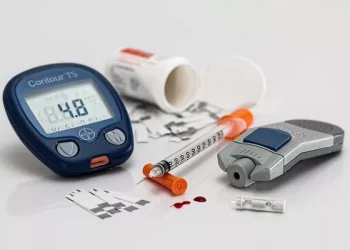On December 23, a hydrogen bus exploded during the refueling process at a hydrogen refueling station in Chungju City, North Chungcheong Province, South Korea. A 30-year-old charging station employee suffered serious facial injuries due to the explosion debris, and the bus driver in his 50s and another person were also injured in the explosion. Fortunately, the accident did not cause a fire.
Media reports said that after the accident, the local police and fire departments of the emergency team immediately rushed to the scene, and is conducting a thorough investigation. Officials in Chungju City said the explosion occurred at the rear of the bus, where a device that converts hydrogen fuel into electricity is located.
Bus operations staff said the “F” warning light on the bus dashboard had been on since the weekend, indicating a battery problem. The manufacturer, Hyundai Motor, advised bus companies to send their vehicles to designated service centers for inspection.
It is reported that the car involved in the accident is a hydrogen fuel car purchased by Chungju City in 2022 to promote the use of clean energy in the public transport system. After the accident, Chungju City decided to suspend the operation of 18 hydrogen buses.
The accident comes just two months after Hyundai Motor North America announced a recall of 1,568 hydrogen hybrid vehicles in the United States due to a hydrogen leak that could increase the risk of fire if exposed to ignition sources. The vehicles involved in the recall are Hyundai Motor’s 2019 to 2024 Nexo models, which are currently the mainstream hydrogen fuel vehicles in the market.
Yang Fuyuan, professor of hydrogen energy and fuel cell at Tsinghua University’s School of Vehicles, pointed out that according to the statistical analysis of global hydrogen safety incidents, hydrogen safety accidents occur more often in pipe valves, hydrogen purification devices, hydrogen storage equipment, fuel cell vehicles and hydrogenation equipment and ventilation devices. In fact, hydrogen safety accidents may occur in various positions of the hydrogen energy industry chain. Among them, pipe valves, hydrogen storage containers and protective devices are the links with higher safety risks.
Security incidents caused by risk have erupted several times in 2019. Between May and September 2019, there were four hydrogen fuel explosions or fires worldwide, resulting in a total of two deaths and 11 injuries. Although these incidents occurred in hydrogen refueling stations or chemical plants, they also caused panic among local people, and even sparked public protests in South Korea and Japan.
Affected by the above events, Toyota Motor and Hyundai Motor, as the two most active car companies in the global layout of hydrogen fuel, temporarily suspended the sale of hydrogen fuel vehicles in Japan, South Korea and Norway in 2019.
Yet these events have not dampened the government’s determination to promote hydrogen. Hydrogen fuel vehicles have the advantages of zero emissions, no pollution, high endurance, etc. The South Korean government has been promoting this type of environmentally friendly models in recent years, and policies such as government procurement and highway toll reduction have been frequent.
According to statistics, in 2023, the sales of hydrogen fuel vehicles in South Korea exceeded the 10,000 mark for the first time.
Hyundai motor has also continuously strengthened the safety design of hydrogen storage tanks. In terms of structural strength, the inner surface of the hydrogen storage tank in modern cars is made of a thin polyamide lining (nylon), which minimizes hydrogen penetration. The outer surface is covered with reinforced plastic (carbon fiber + epoxy) with a thickness of 20-25 mm, which can maintain a pressure of 70 bar.
In terms of detection, modern vehicles are equipped with multiple real-time sensors in the vehicle to detect any leaks on fuel tanks, fuel supply systems and fuel cell stacks. If a hydrogen leak is detected during standard operations or during an external impact that damages the fuel supply system, the driver’s dashboard display will warn. The safety system may even close the valve of the hydrogen storage tank, preventing the hydrogen from gushing out of the fuel tank and causing other hazards.
However, the full link of hydrogen energy application involves production, storage, transportation, use and other links, and any problem in one link will affect safety and consumer trust.For China, which wants to promote hydrogen energy, the safety of creating a full link is a top priority.
The National Energy Administration pointed out in the Medium and Long-Term Plan for the Development of the hydrogen energy Industry (2021-2035) that safety should be taken as an inherent requirement for the development of the hydrogen energy industry, hydrogen energy safety supervision systems and standards should be established and improved, and the prevention and control of major safety risks in the whole industrial chain such as hydrogen energy production, storage, transport, processing and use should be strengthened, and the safety management level of the whole process should be improved. Ensure the safe and controllable use of hydrogen energy.
Related topics


























